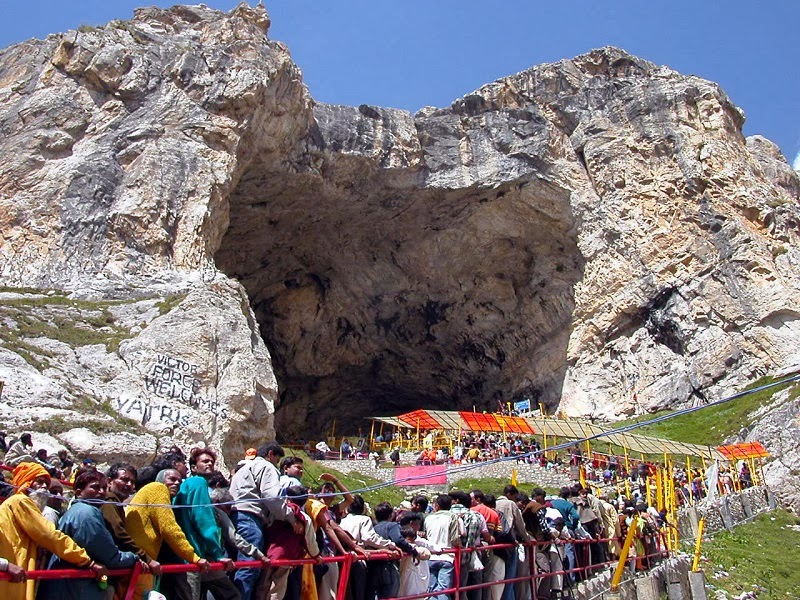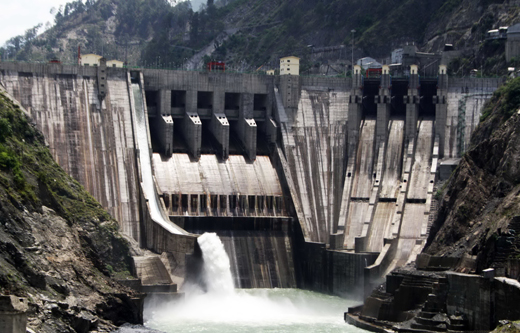Israr Khan (IPS) offers a detailed narrative about what is happening in Ladakh and why

It all started on May 5, when Indian and Chinese soldiers punched and pushed each other at Pangong Lake that left many injured. Army Chief General Narvane dismissed it as a routine brawl, insisting such temporary and short-duration phases have happened in the past between the two countries and now both sides have disengaged.
A week later, Chinese crossed the undefined border at several points, penetrated 4-5 km and reportedly destroyed Indian posts and bridges and dug in deep with tents and trenches at the confluence of the Galwan and Shyok rivers. Narvane had to rush to Army’s Leh based 14 Corps Headquarter to review the situation.
For the first time since the 1999 Kargil intrusions, Indian Territory is in the hands of Chinese. Satellite images clearly show Chinese build-up in Galwan river area and Pangong Lake areas.
A History of Incursions
An August 2013 report revealed that India lost 640 sq km due to PLA patrolling, a routine denying to us. The Government, however, denied the report but Chinese soldiers virtually prevented troops from getting access to Rakinala near Daulat Beg where the IAF reactivated the world’s highest airstrip in 2008. This resulted in the opening of the Nyoma Airbases which perhaps provoked the PLA to intrude into Depsang.
The latest scuffle took place on May 5 – 6 and on May 12 towards the south at Pangong Tso over area-denial for patrolling at Srijan and on May 9, near the Naku La Pass in Sikkim Sector of Sino- India border. A number of personnel (150) on both sides were injured. Troops disengaged after dialogue at the local commander level.
Contested Borderlines
Issue of the sovereignty over two larger and several smaller but separated pieces of territory has been the bone of contention between China and India. One relatively larger area called Aksai Chin which China annexed in 1962 war is located right above the Galwan Valley and was part of the Union Territory of Ladakh adjoining the Chinese autonomous Xinjiang region. It is a virtually uninhabited high-altitude area through which the Xinjiang-Tibet highway crosses.
The other disputed territory lies south of the McMahon Line and is now called Arunachal Pradesh and South Tibet by China. The McMahon Line came into being after the 1914 Simla Convention between British India and Tibet but without China being a party to it. At the centre of the Sino-Indian border issue is now a difference in perception on where exactly the border lies between the two nationals.
Long conceded as an area that was beyond the outback, Aksai Chin never really mattered to anybody except for a few trade routes that crossed through it. The first owner of the area was the Sikh Lahore darbar that annexed Ladakh in 1834.
The Chinese army invaded Ladakh in 1841 and defeated the Sikhs but both sides later signed a treaty promising to respect the borders. After the Sikhs were defeated in 1846 by the British army, the entire Ladakh region became part of the Queens territory. History has it that the British tried to talk to the Chinese on where the border lay but given the low strategic interest in the region then, both sides decided to go by national boundaries while deciding the boundary at from Pangong lake and Karakoram pass. The entire border in between was left undefined.
WH Johnson, a British India civil servant proposed the Johnson Line in 1865. He marked the entire Aksai Chin as a part of Jammu and Kashmir. However, China in 1899 reclaimed Xingjian and expressed interest in Aksai Chin.
Post-1947, India chose to take the Johnson Line as the border. However, the Chinese claimed the entire Aksai Chin. During 1962 war, China captured it beyond the McCartney-Macdonald line and continues to hold it.
Later the Chinese proposed that both sides move 20 km inside from the new line of actual control (LOAC) but it has been crossing that line as India perceives it. An agreement to resolve the dispute was signed in 1996 and a mutually agreed Line of Actual Control came into existence.
In Ladakh
India shares a long border with China. Apart from various areas that China has staked a claim for, it has recently raised two fresh dispute points at Pangong Tso 83 sq km and at Chumur where it claims 80 sq km.
The Chinese are asserting further west to claim 83sq km here. The PLA has built a 4.5 km long road to prevent Indian patrolling. The PLA’s road network from here extends to Huangyangtan base located near their national highway.
Further south in Demchok, China claims some 150 sq km. The PLA has built massive infrastructure on its side, moved armoured troops into Charding Nalla since 2009. Tibetan nomads pitched tents on Hemis monastery’s land throughout 2018-19. In Chumar where China claims 80 sq km land, it probably wants a straight border from PT- 4925 to PT- 5318 to bring Tible mane (Stupa) area under its control. For India, however, holding of Chumur is critical for the safety of the Malnali-Leh route. The Sirijap Range on the northern bank of the lake remains most contested, from which 8 cliffs sprout out and are referred to as the “finger series” 1 to 8. India’s LAC claim line is at Finger-8 but the actual position is only up to Finger-4. China claims the area up to Finger 2 and has now come up to Finger 4 and consolidated its incursion with heavy artillery, trenches and numerous troops.
Right now, the key to the conflict is Daulat Beg, named after Sultan Said Khan who died here on his return journey after the invasion of Ladakh and Kashmir. For decades, India has a small military base there.
New Infrastructure
In the last few years, India raised the base to a brigade-level and connected it to its internal road network. Barely 8 miles from Karokaram Pass and the Aksai Chin, it is a very crucial and strategic location because of ist closeness to the Karakoram highway connecting China with Pakistan and the Siachen Glacier on the left.
India constructed a road called Darbuk-Shyok-Daulat Beg Road in October 2019 with the sole purpose of supporting the base. BRO has fast-tracked the 260 km long Shayok-DBO road construction also. So Chinese made a decoy move in the last couple of weeks, and landed 5,000 troops inside Galwan Valley and intruded into five points in Ladakh – four along the Galwan River, and one near the Pangong lake. The western ridge of the valley covers the newly constructed Darbuk-Shyok-Daulat road. There is no other supply route for the DB brigade, except by air.
The Current Status
It is a tight valley, and once inside, Chinese have sealed off the mouth of the valley and now we have to uproot this strong Chinese presence. Important to note that the Galwan Valley is well inside the LAC on the Indian side. With the area in very close proximity (500 Mtrs) to the supply road under Chinese possession, the effectiveness of the DB brigade is now considerably reduced.
Overall, the pattern suggests that intends to snatch the lake at Lukung through a 3-pronged strategy of attaching from Sirijap in the North, Chuchul in the south and through the lake water from the middle. This is the key choke point from where the Chinese can cut off Indian access to the entire flank of Chip Chap planes, Aksai Chin in the east and Shayok valley to the north. It could mean that Indian control is pushed to the west of the Shayok River and south of the Indus river, forcing India to accept both rivers as natural boundaries. Once China gets control of the southern side of the Karakoram, it can easily approach Siachen from the Depsung corridor and meet at Tashkurgan junction from where the CPEC crosses into Gilgit Baltistan.
This would render strategic Nubra vulnerable, possibly impacting even India’s hold over Siachen. China’s access to Changla-pass through Lukung and Tangtse would threaten the entire Indus valley. China is also eyeing the waters of the Shyok, Galwan and Chang-Chenmo river to divert them to the arid Aksai Chin and its allied regions.
Possible Reasons
So many people are offering different reasons. By undoing Article 370, many say the BJP has undone 70 years of Jammu and Kashmir’s “disputed territory” tag mandated by UN and approved by P-5 including China. With the state undone, China re-started claiming Ladakh or parts of it as its territory. The undoing of Article 370 has blown off the legal cover to Ladakh.
Given the alliance between China and Pakistan, it could a bilateral conspiracy against the “common enemy” to ensure the safety of the US $ 70 Bn CPEC corridor.
Many think the increasing US influence over India could be a factor.
Recently, yet another factor is being said to the participation of two BJP MPs in Taiwan Presidents swearing-in ceremony.
I personally believe that the present Chinese incursion is to ensure the safety to CPEC Corridor. The strategic Karakoram highway passes through this area and leads to the Gwadar Port which gives China a foothold in the Arabian Sea.

Seemingly, China wants Kashmir as a bargaining chip and ask reversion of Article 370 in return for its retreat from Ladakh. China has not budged an inch as on date. Gimmicks like including Gilgit- Baltistan in the Indian Meteorological broadcasts and telling Pakistan to vacate PoK is good rhetoric to appease the masses but counterproductive as well. We should act first and then brag.
By now, 20 soldiers including a Colonel have been killed. It remains to be seen how India responds. While the armies are in an eyeball to eyeball confrontation situation, we are told the diplomatic and military channels are open.
The situation, however, has taken a turn for the worst and let’s now be prepared for war. At the same time, let us hope and pray for peace.
(Author, an IPS officer retired as DIG from Jammu and Kashmir Police. He has served the region during 1989-90 as a young DySP. He is currently Treasurer of National Conference. Ideas expressed in the write-up are personal.)















